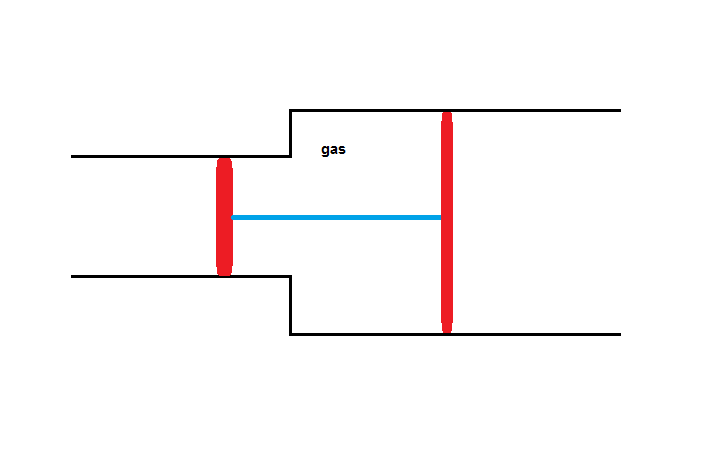Piston Paradox

Recently, I came across a problem which involved the above setup. A gas is filled in the cylinder shown in the figure. The two friction-less pistons(red) are joined by an in-extensible string(blue). Answer the following:
- If this system is placed under isolated vacuum conditions(space), the pistons will?
- If the gas is heated, the pistons will?
Comment below with what you think will happen!
No vote yet
1 vote
Easy Math Editor
This discussion board is a place to discuss our Daily Challenges and the math and science related to those challenges. Explanations are more than just a solution — they should explain the steps and thinking strategies that you used to obtain the solution. Comments should further the discussion of math and science.
When posting on Brilliant:
*italics*or_italics_**bold**or__bold__paragraph 1
paragraph 2
[example link](https://brilliant.org)> This is a quote# I indented these lines # 4 spaces, and now they show # up as a code block. print "hello world"\(...\)or\[...\]to ensure proper formatting.2 \times 32^{34}a_{i-1}\frac{2}{3}\sqrt{2}\sum_{i=1}^3\sin \theta\boxed{123}Comments
since the pressure will be same............but the area of right piston is greater ..the pressure force on that will be greater.......................so it will move rightwards
Log in to reply
But all this is internal force! If the piston moves rightwards, the center of mass will also move towards the right, which is is impossible for an internal force to do!
Log in to reply
the piston shall move.....as a pressure force would be exerted on the vertical wall of the container also ...on the left part ..the vertical wall which is present to make connection between the cylinder of the smaller piston and the larger piston............... the force on this wall would provide a reaction....which would be an external force............
Log in to reply
Good job! That is the answer that I was expecting. It took me a while for me to realize that the gas exerts a force on the vertical walls also.
Log in to reply
yes the situation was really tricky...........
@Mvs Saketh @Shashwat Shukla @Ronak Agarwal @Azhaghu Roopesh M @Siddhartha Srivastava @Tanishq Varshney @Michael Mendrin @Pranjal Jain @Krishna Sharma @Mohan Nandakumar @John Muradeli @Kushal Patankar
Log in to reply
Yash gave the right answer. As a stepping-stone in analysis, consider the case where we only have the right piston, enclosing a certain quantity of gas inside a cylinder with a bottom. What happens when the apparatus is exposed to high vacuum? The piston will move. In this case, the smaller piston also wants to move out, but the force pushing the smaller piston is overcome by the force pushing the larger.
Log in to reply
Thank you! My concern was that momentum wasn't getting conserved. But I later found out that it is. In the single piston case that you mentioned, the piston will move outward and the container will move backward, thus conserving momentum. Something similar happens here too, the connected pistons move toward the right and the container moves to the left.
I have understood this problem, it is an interesting one to analyze.
Pistons will surely move right. But still the momentum will remain conserved. There is no net motion of the center of mass of system as a whole . Thats all I saw in the problem above